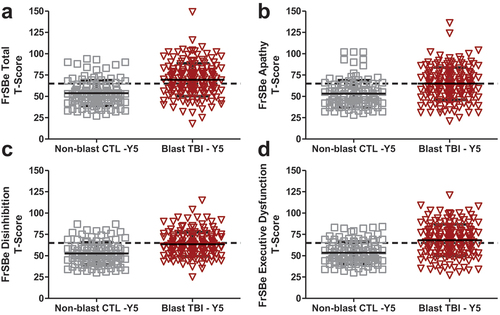Figures & data
Table 1. Demographic characteristics of participants at 5-Year Follow-up.
Figure 1. FrSBe T-scores at 5-Year follow-up for blast mild TBI and non-blast controls.

Figure 2. FrSBe T-scores at 1-Year follow-up for blast mild TBI and non-blast controls.

Figure 3. Change in FrSBe T-scores from 1-Year to 5-year follow-up for blast mild TBI and non-blast controls.

